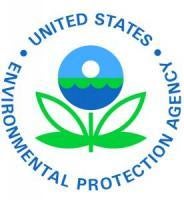Voluntary program will benefit communities by providing incentives for renewable energy and energy efficiency
After extensive engagement with community groups and other stakeholders, the U.S. Environmental Protection Agency (EPA) is proposing additional details for public comment about the optional Clean Energy Incentive Program (CEIP), which was included in the final Clean Power Plan. The CEIP was designed to help states and tribes meet their goals under the plan by encouraging early investments in zero-emitting renewable energy generation, and by removing barriers to investment in energy efficiency in low-income communities. Today’s proposal will help guide states and tribes that choose to participate in the program when the Clean Power Plan becomes effective.
“For nearly a year we have collaborated with communities and other stakeholders, listening closely to ideas about how to design a range of elements of the CEIP. Today’s proposal keeps that conversation moving forward,” said Janet McCabe, acting assistant administrator for EPA’s Office of Air and Radiation. “Taking these steps will help cut carbon pollution by encouraging investment in renewable energy and energy efficiency, which will help give our kids and grandkids a healthier and safer future.”
The proposal provides a key opportunity for stakeholders to comment on several program design elements including: clarifications about project eligibility including expanding eligibility to solar energy project in low-income communities, providing states with the flexibility to choose one or more existing definitions of low-income community, and how CEIP incentives should be made available to eligible renewable energy and energy efficiency project providers.
The proposal is informed by an extensive outreach and engagement process to gather early input from stakeholders and the public on how best to design a number of features of the CEIP, including stakeholder listening sessions and a non-regulatory docket that gathered more than 5,000 comments. EPA’s engagement with the public on this proposal will continue with a 60-day public comment period, webinars and a public hearing on August 3, 2016, in Chicago.
In 2015, President Obama and EPA finalized the Clean Power Plan – the first-ever national limits on reducing carbon pollution from existing power plants. In February 2016, the Supreme Court stayed the Clean Power Plan. While the courts review the plan, and during the stay, no state is required to comply with the Clean Power Plan. Many states and tribes have indicated that they plan to move forward voluntarily in cutting carbon pollution from power plants and have asked the agency to continue providing support and developing tools that may support those efforts, including the CEIP.
EPA is responding to these requests and is following through on our commitment to provide states with additional information on the CEIP, consistent with the stay. This work will provide states with additional clarity, which will help them make timely decisions regarding options for plan development when the stay is lifted.
Additional information on the proposal here. You can read the original article on the EPA's website here.



 />i
/>i
